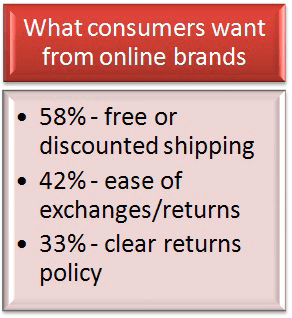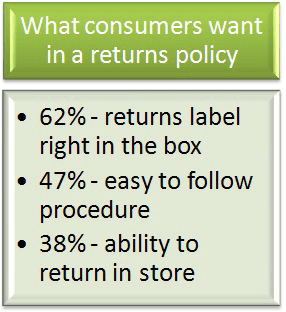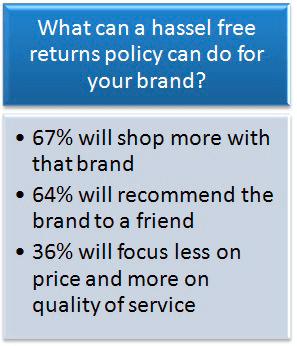Tips For Optimizing Your Returns Process
FedEx has projected an 11 percent increase in Cyber Monday parcel delivers from last year – totaling more than 22 million packages. While e-retailers ramp up technology and staffing to meet demand, they often neglect an important component of online logistics – returns processing.

This year, an estimated $3 billion in merchandise will be returned during the holiday season. Are you prepared? This article will address some of the latest trends in reverse logistics and offer tips on what makes a good returns policy.
Consider the following statistics from a recent ComScore study: 85 percent of consumers will not shop with a retailer again if the returns process is not convenient. Compare that with 95 percent of consumers who said they would continue shopping with a retailer who had an easy and convenient returns process.
Additionally, 37 percent of shoppers would recommend a brand that offers a free or easy returns policy. These statics are evidence that consumer expectations have increased in tandem with online spending. Consumers are actively seeking out brands that offer conveniences such as easy returns, free or discounted shipping, and even carbon neutral shipping options.
How do brands respond to these demands while still remaining profitable? Today, 86 percent of consumers review the returns policy during the purchase lifecycle, making returns a critical component of the consumer experience.
First, let’s analyze what makes a good returns policy.
Simple Language:
Make sure your policy is clear and concise. Complicated policies can lead to misinterpretation and cause frustration for both the brand and the consumer.
Timeframe for Returns:
Clearly state the timeframe consumers need to follow to make a return. This tactic helps protect your brand’s bottom line and experience while giving consumers a reasonable amount of time to return merchandise.
Condition of Merchandise:
Brands can further protect themselves by clearly defining the expectations for the condition of returns. Stipulations such as not removing tags or breaking the tamper seal on a product can save brands lost revenue while holding consumers accountable.
Refund or In-Store Credit:
Give consumers the option of a monetary refund or store credit in an effort to continue the relationship. Consider offering an added incentive such as a bounce-back offer tied to a source or promo code to further build your brand equity.
Fees Associated with Returns:
It is critical that brands disclose any fees associated with returns. Keep in mind that today’s consumers have an expectation of either free or reduced shipping rates, so if you must charge for returns processing be sure the cost is fair and reasonable.

Make Your Policy Visible:
Remember, your policy is an extension of your brand. Shipping and returns policies can be used as a strategic marketing differentiator to draw consumers to your site. Remember the key to a great policy is transparency and fairness.
With the expectation of returns being free or low cost, brands are now turning to technology to ensure they are satisfying consumer demand while keeping costs in check. Currently, 59 percent of merchants are paying for returns using convenience labels. In the past, these labels were prepaid and brands had to automatically absorb the return shipping cost, regardless of whether the package was returned or not.
Today, these labels can now be scan-based meaning the brand is not charged the cost of the return label until it is scanned by the shipper. Rates can be calculated using the average weight of the product returned or a fixed flat rate.

Brands are also looking for ways to optimize their shipping through strategic analysis of carriers, modes of transportation, and zone optimization. Multi-carrier solutions give brands flexibility with their logistics needs as well as a competitive advantage to leverage pricing.
What are the keys to optimizing your reverse logistics program?
Visibility:
Using integrated technology to create visibility across the supply chain and leverage resources to minimize costs and reduce waste.
Velocity:
Optimizing forward and reverse logistics to trim transportation, infrastructure, and overhead costs to increase disposition and speed to shelf.
Value Recovery:
Accurately determine the appropriate disposition of assets to recover the most value from your returned products.
Brands who recognize the value of the complete product lifecycle – including reverse logistics – will remain ahead of the competitive curve and add value to their products by offering consumer incentives while utilizing technology to optimize their returns processing strategy. Let us help you optimize your return policy. Contact us today for a free returns assessment.
Sources: ComScore 2012 & 2013 studies, Endicia, USPS

